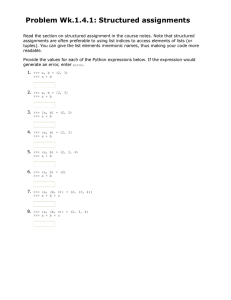Problem Wk.10.1.1: Probability distributions: DDist
advertisement
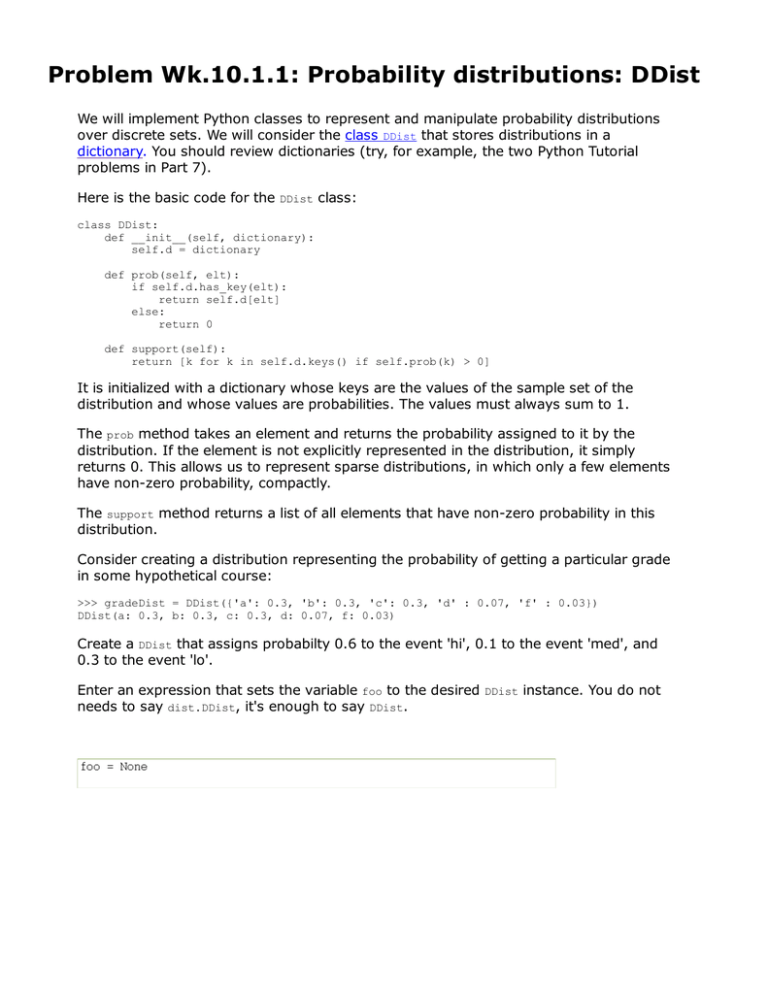
Problem Wk.10.1.1: Probability distributions: DDist
We will implement Python classes to represent and manipulate probability distributions
over discrete sets. We will consider the class DDist that stores distributions in a
dictionary. You should review dictionaries (try, for example, the two Python Tutorial
problems in Part 7).
Here is the basic code for the DDist class:
class DDist:
def __init__(self, dictionary):
self.d = dictionary
def prob(self, elt):
if self.d.has_key(elt):
return self.d[elt]
else:
return 0
def support(self):
return [k for k in self.d.keys() if self.prob(k) > 0]
It is initialized with a dictionary whose keys are the values of the sample set of the
distribution and whose values are probabilities. The values must always sum to 1.
The prob method takes an element and returns the probability assigned to it by the
distribution. If the element is not explicitly represented in the distribution, it simply
returns 0. This allows us to represent sparse distributions, in which only a few elements
have non-zero probability, compactly.
The support method returns a list of all elements that have non-zero probability in this
distribution.
Consider creating a distribution representing the probability of getting a particular grade
in some hypothetical course:
>>> gradeDist = DDist({'a': 0.3, 'b': 0.3, 'c': 0.3, 'd' : 0.07, 'f' : 0.03})
DDist(a: 0.3, b: 0.3, c: 0.3, d: 0.07, f: 0.03)
Create a DDist that assigns probabilty 0.6 to the event 'hi', 0.1 to the event 'med', and
0.3 to the event 'lo'.
Enter an expression that sets the variable foo to the desired DDist instance. You do not
needs to say dist.DDist, it's enough to say DDist.
MIT OpenCourseWare
http://ocw.mit.edu
6.01SC Introduction to Electrical Engineering and Computer Science
Spring 2011
For information about citing these materials or our Terms of Use, visit: http://ocw.mit.edu/terms.
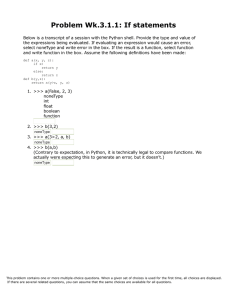
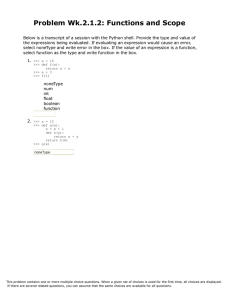
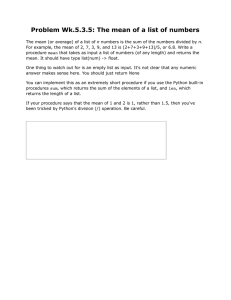

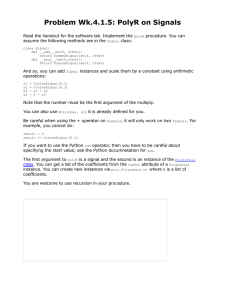
![Problem Wk.2.1.5: First Word Machine [Optional]](http://s2.studylib.net/store/data/013436673_1-e96213a7734208d3f40d268ce5f87556-300x300.png)
